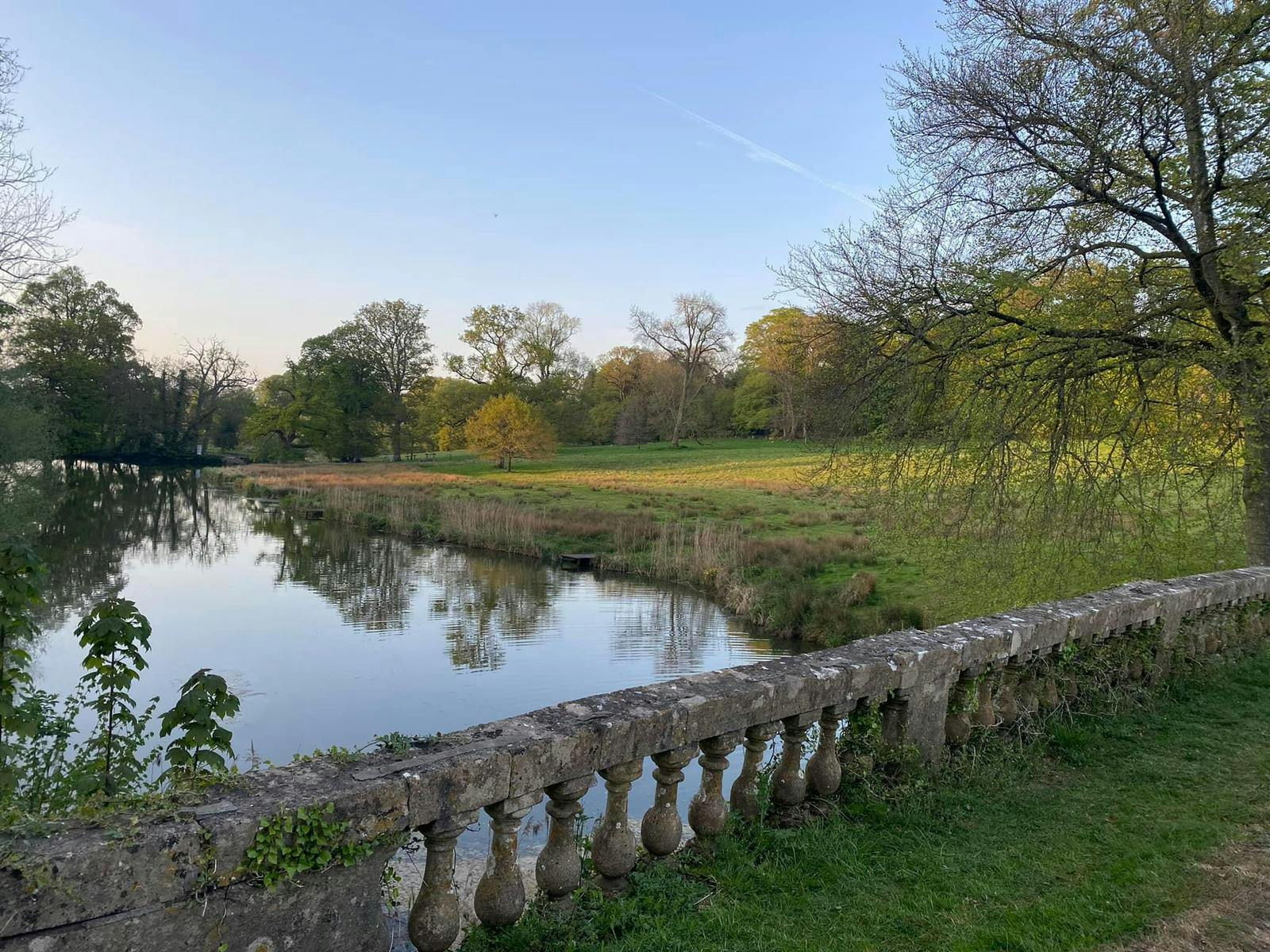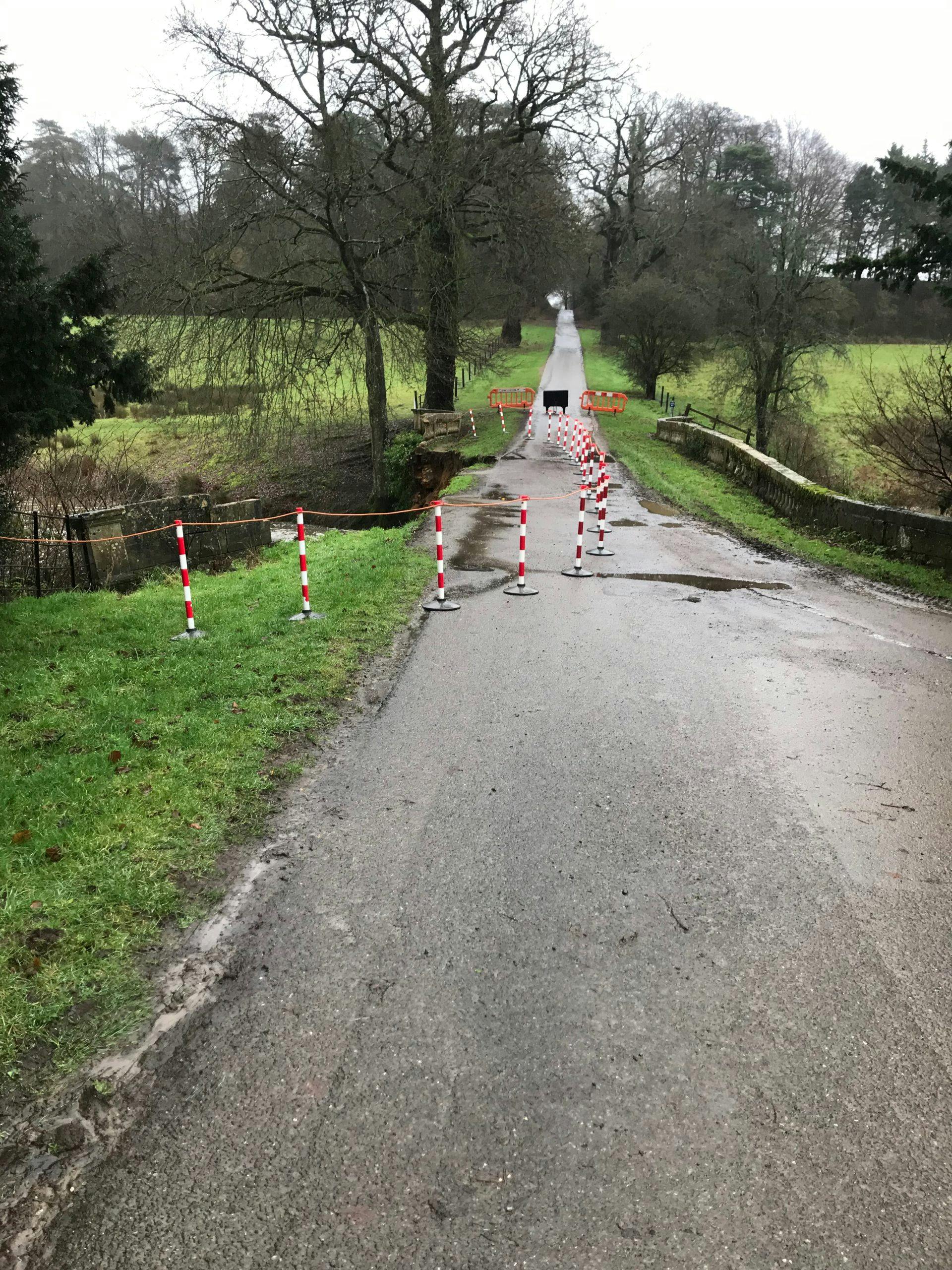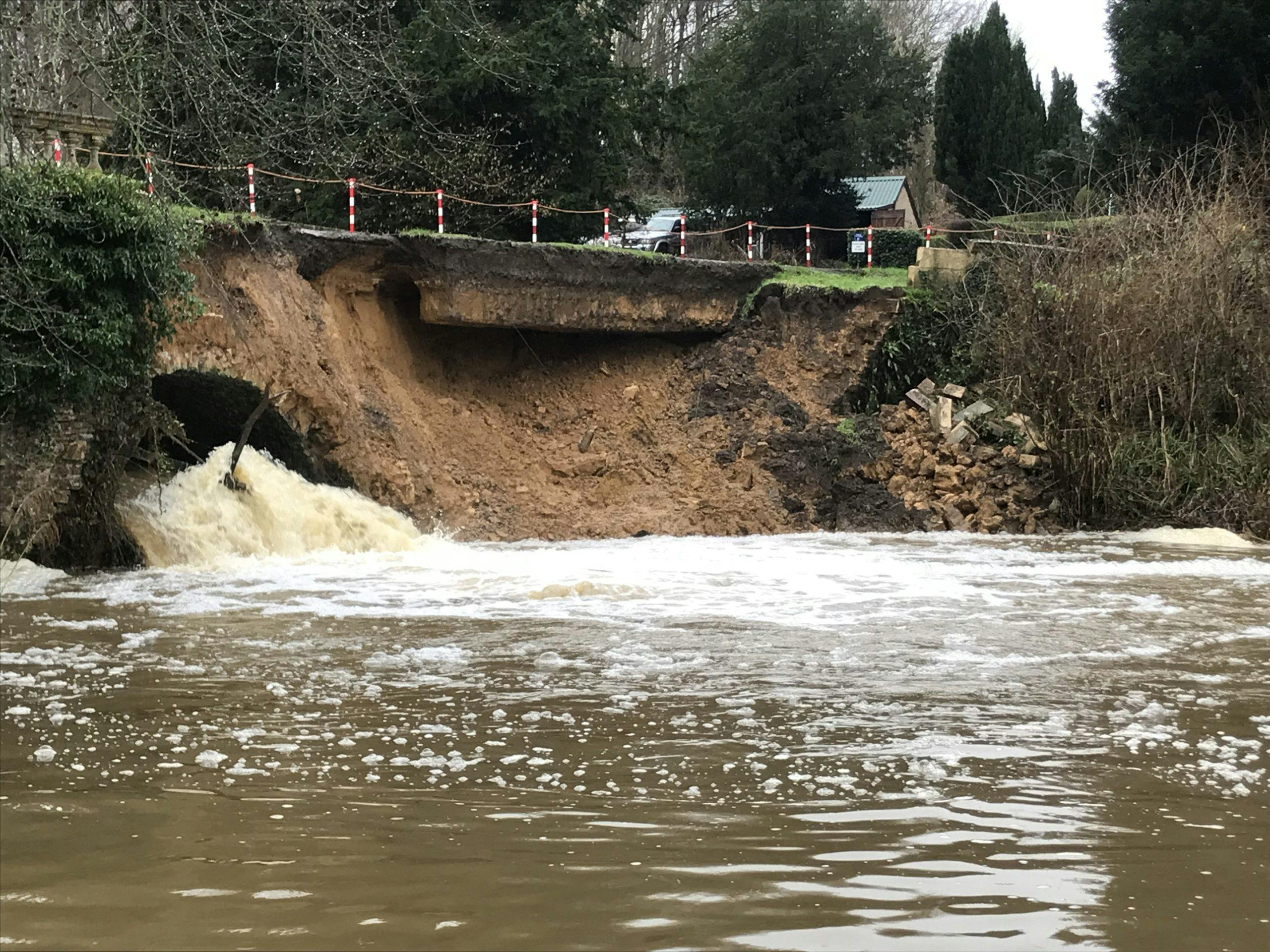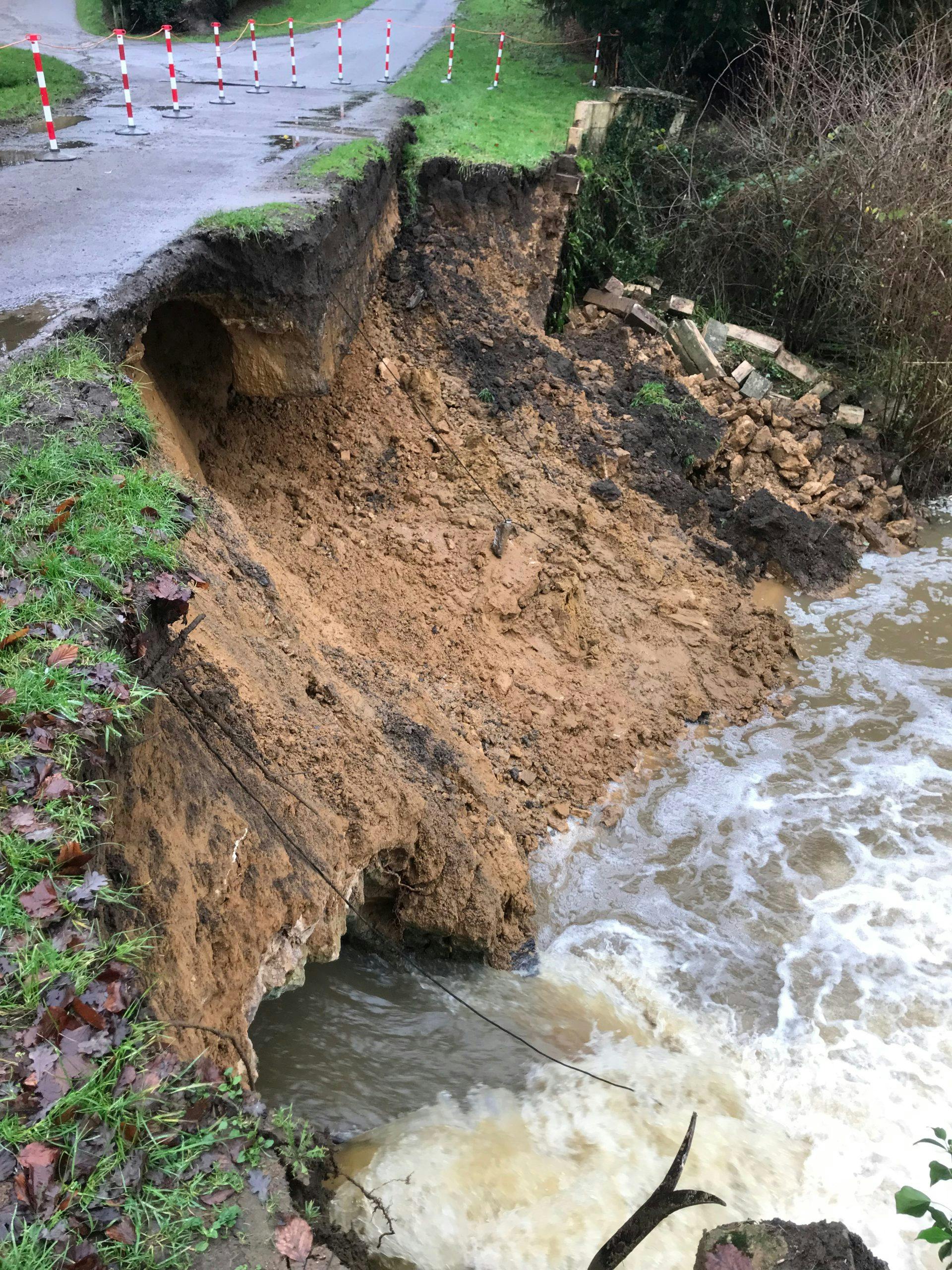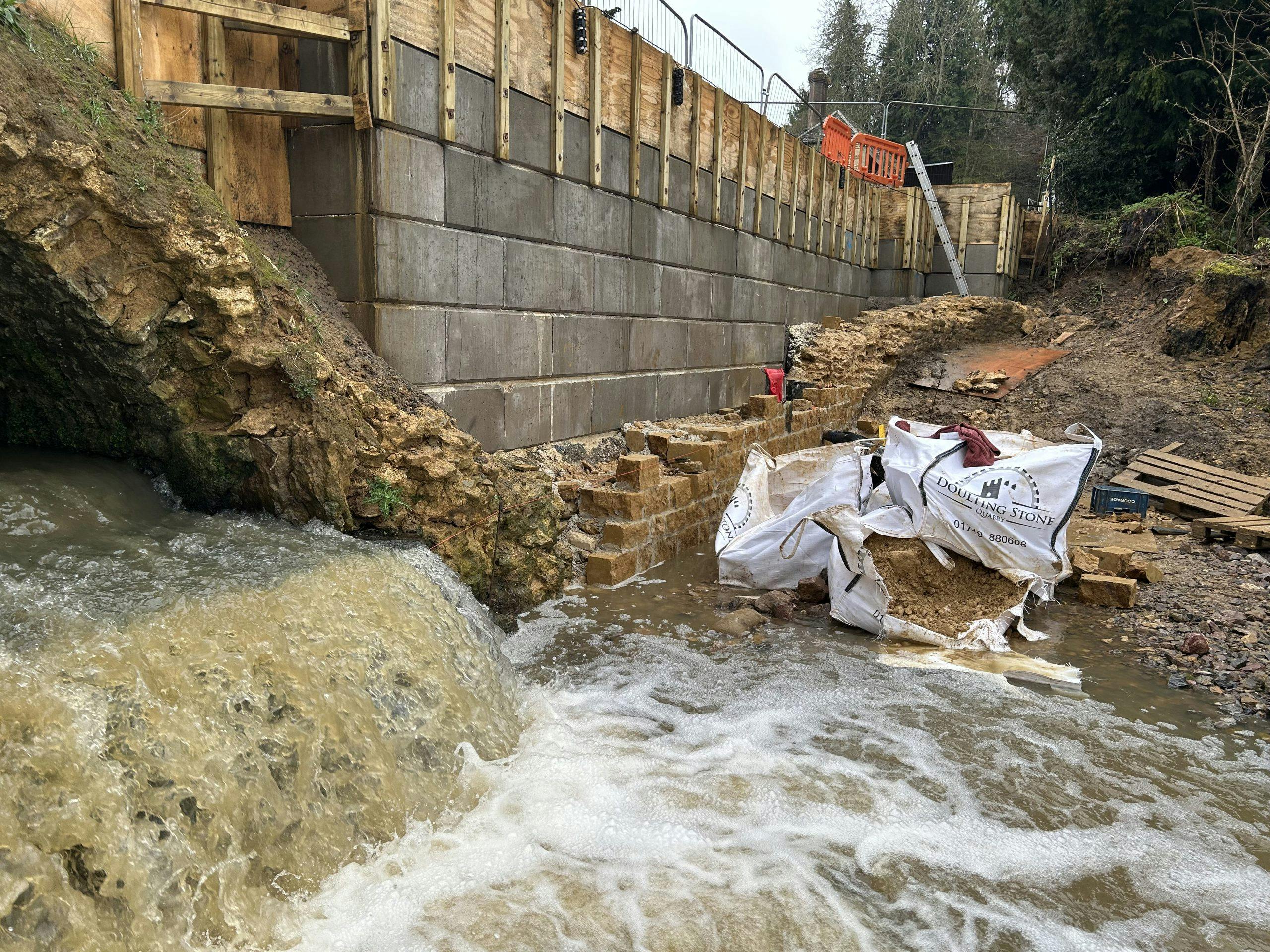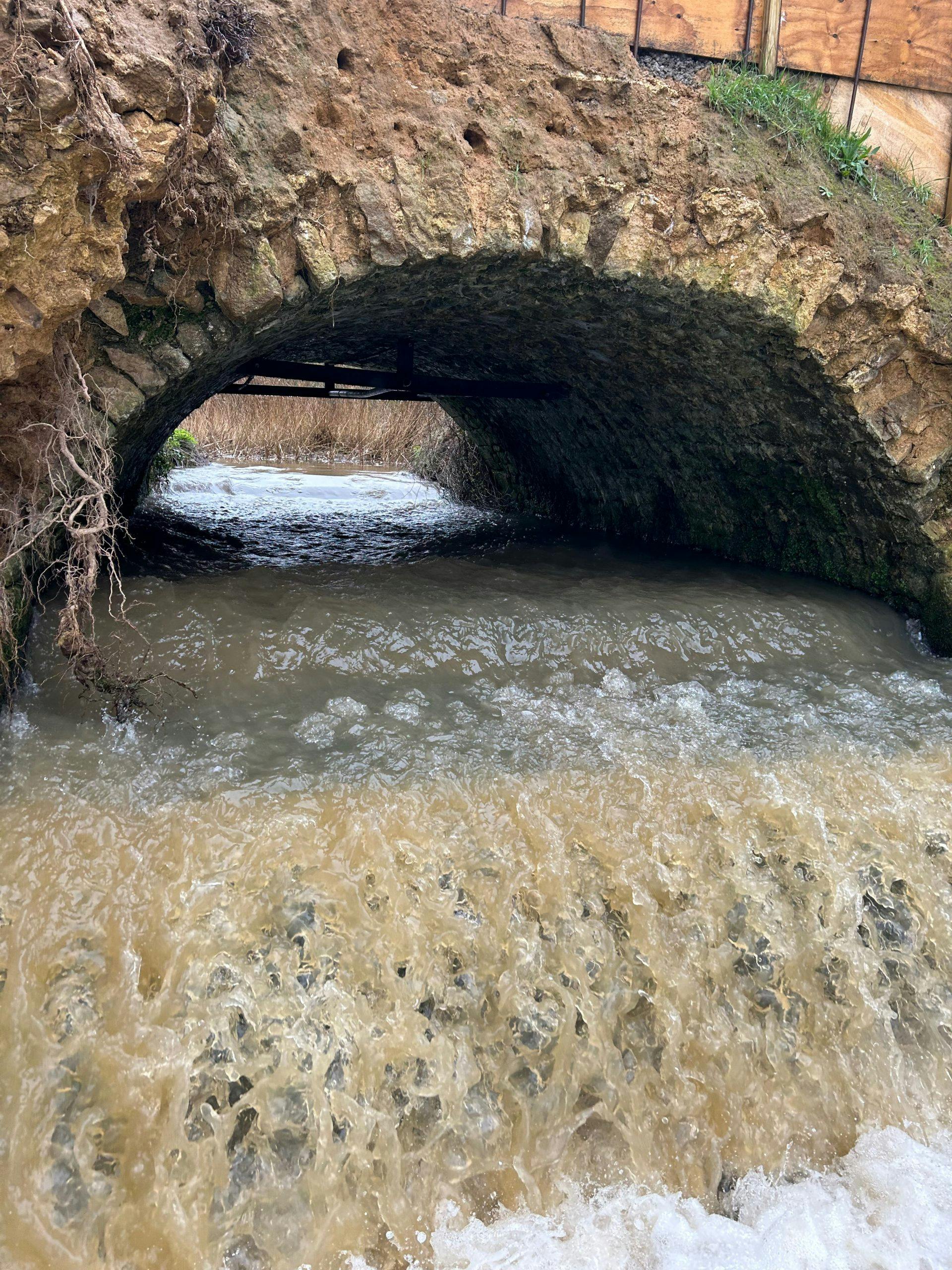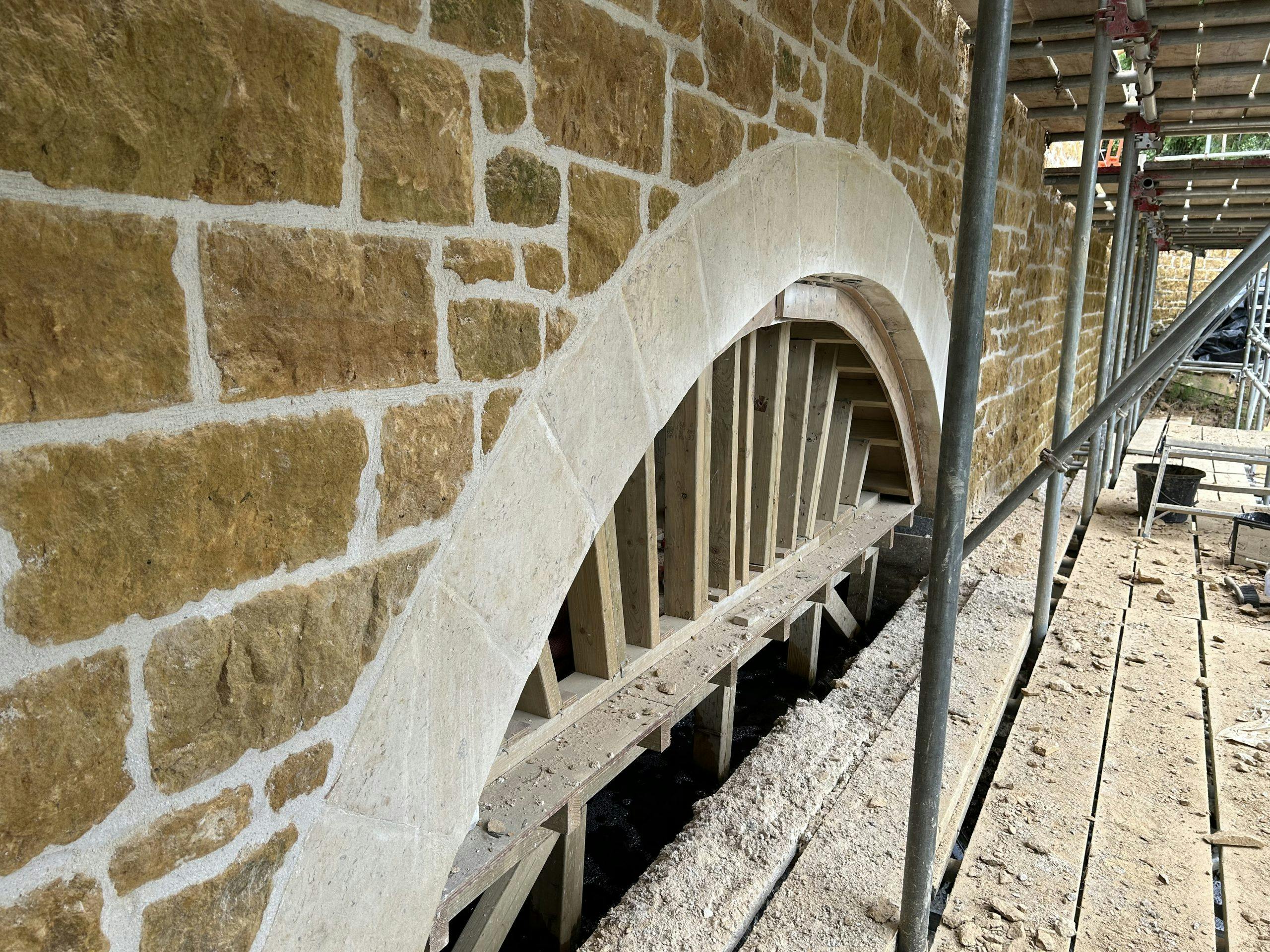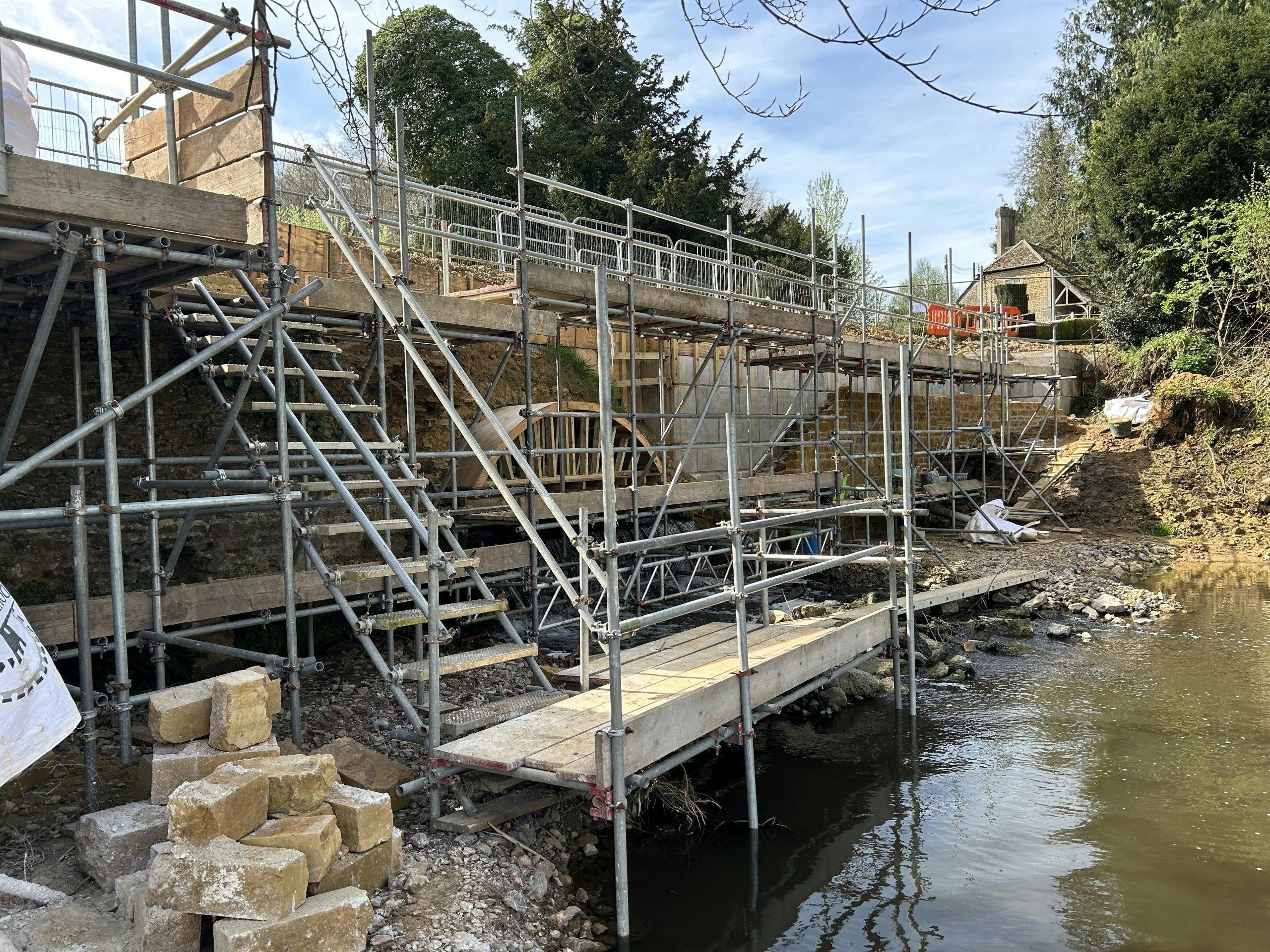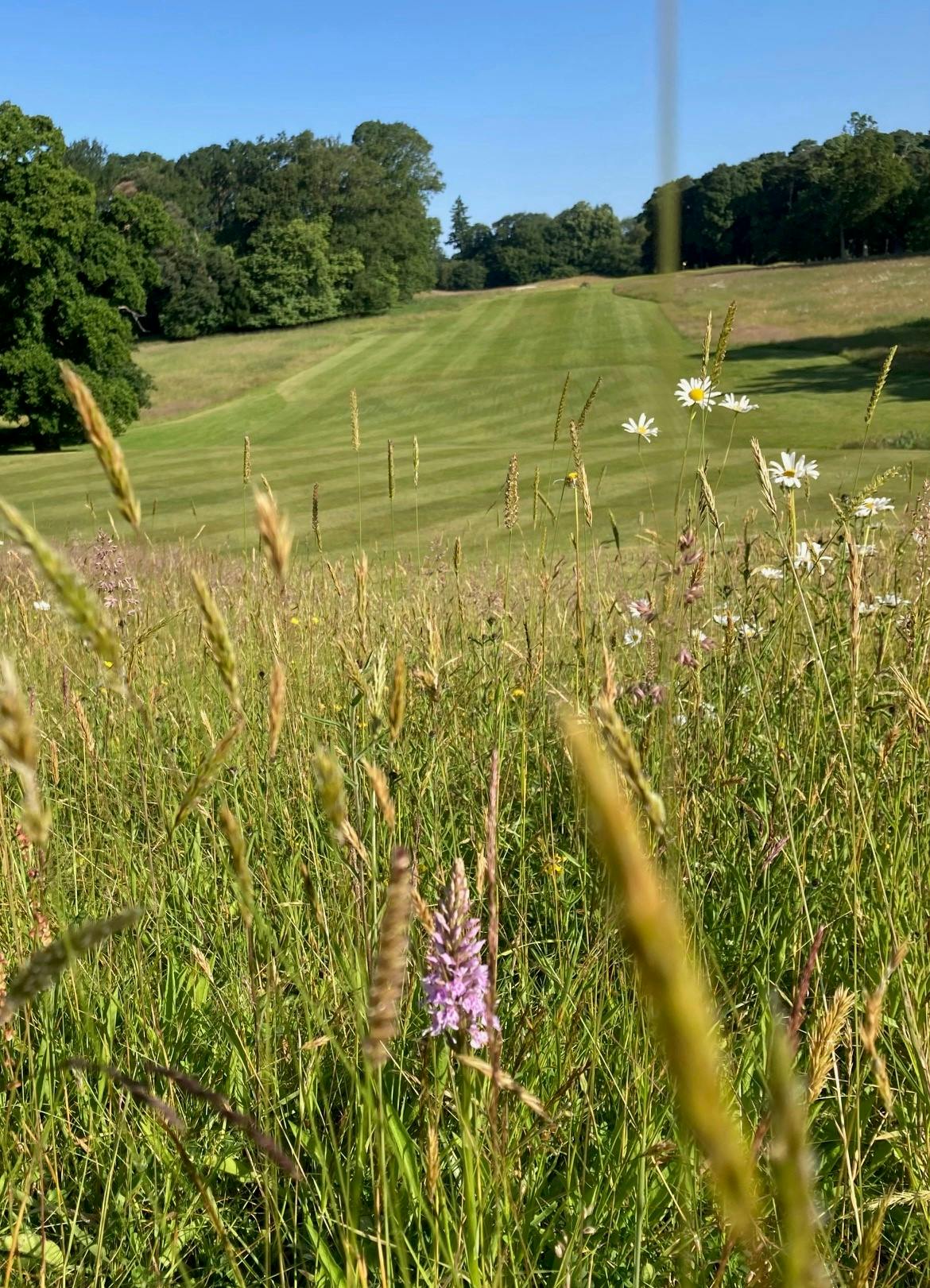Pondtail Bridge Restoration
On the night of the 11th of January 2023 following a period of sustained rainfall (41.2mm of rain was recorded falling on the 11th) the north elevation and downstream side of Pondtail Bridge on the Bowood Estate partially collapsed into the lake.
June 25, 2024

A Bridge Worth Saving
Located in the southern part of Bowood Estate on one of the entrance drives, the bridge is crossed by public footpath CALW51A which connects Calne and Sandy Lane. As such it forms part of the 13 miles of footpaths and bridleways crossing the estate which are enjoyed by local residents and maintained by the Estate’s team.
The watercourse that runs under the bridge is a winterbourne, with flow running from the south to the north feeding the Bowood Lake. The bridge was designed and built as a road bridge in the 1760s as part of Capability Brown’s park. Constructed with great attention to detail using ironstone rubble with an Ashlar cornice and balustrade it comprised a single arch at water level on the north side, with corresponding details on the south side. There is no record of who the stonemasons were. Owing to its architecture importance it is a Grade II listed structure.
Before the arrival of the Great Western Railway at Chippenham in 1841 and the subsequent construction of the main entrance drive from the Golden Gates in Derry Hill village, the main entrance to Bowood was off the London Road in Calne and Pondtail Bridge provided a focal point on the drive. Horses and carriages would carry passengers along tree lined avenues and over the bridge a mile from the house.
Maintaining the longevity and safety of the bridge was managed by the estate with frequent structural checks by third party engineers. No one would have predicted the effects of the rain on January the 11th. During the days that followed further rain worsened the damage.
The bridge was closed to public access and a temporary footpath was established 100 meters from the site to allow pedestrians to continue to walk in the park.
The following July a listed building consent was applied for and successfully granted two months later. Repairs started in November under the direction of Renelec, a company based in Devizes, who specialize in services to the construction industry. Among their proposed works was to carefully dismantle and store remaining features, salvage collapsed stone from the watercourse, remove ineffective tie bars from under the bridge vault, excavate loose collapsed bridge fill, reinstate the carriageway over the bridge, reinstate ashlar balustrading and rebuild the stone facing to the satisfaction of the conservation office.
By January 2024 the body and surface of the bridge were stabilized. In early February the bridge reopened as a public footpath. In June the barrel arch was repaired, and the facing wall reconstruction reached road level and vehicular access over the bridge was permitted. The final stages in the coming months will include the reinstatement of the balustrade, cornice and bridge surface.
The stonework has been undertaken by local stonemasons John Abbott and Fred Sawyer. They have used salvaged material and Doulting stone to face the bridge and stone quarried from Neston in Wiltshire to form the barrel arch. Interestingly John spotted the Doulting stone on his travels and later discovered that it had been used at Bowood 30 years earlier on the Bowood Golf Clubhouse.
Remarking on the original construction of the bridge they noted ‘It is an incredibly ornate feature and an eye opener to see the work that has gone into it and to do this double sided into a lake is amazing.’
The restoration legacy will endure for many years and the bridge will continue to be a heritage landmark accessible to all.
